Solution Ideation
Based on our key learnings from our intervention study, we first wrote down as many ideas for our product as we could on sticky notes. Notable ideas include the option to send in video compliments, restricting a user’s compliments until they send one in, and a public compliment wall for people to view the compliments received by their friends.


Figure 1: Sticky notes
We then fleshed out our favorite ideas:
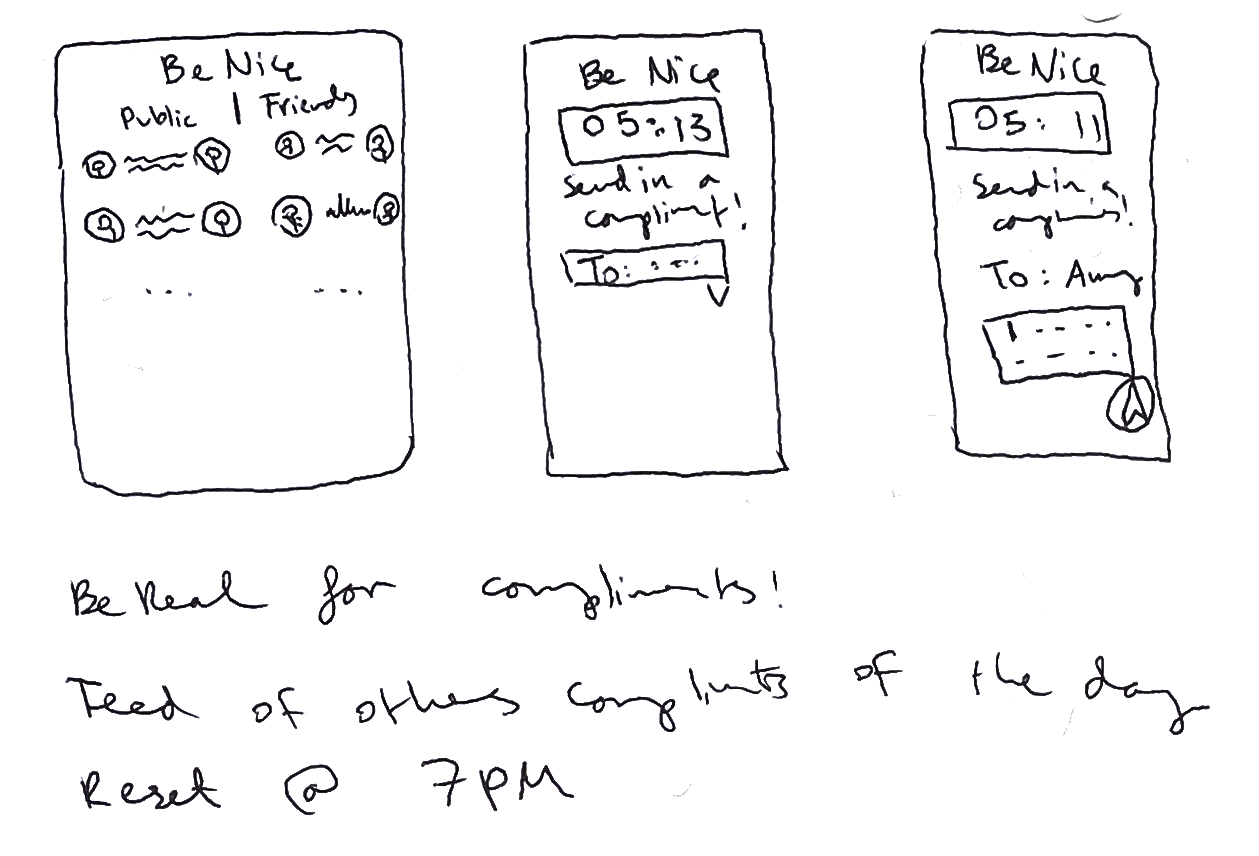
Figure 2: Idea 1
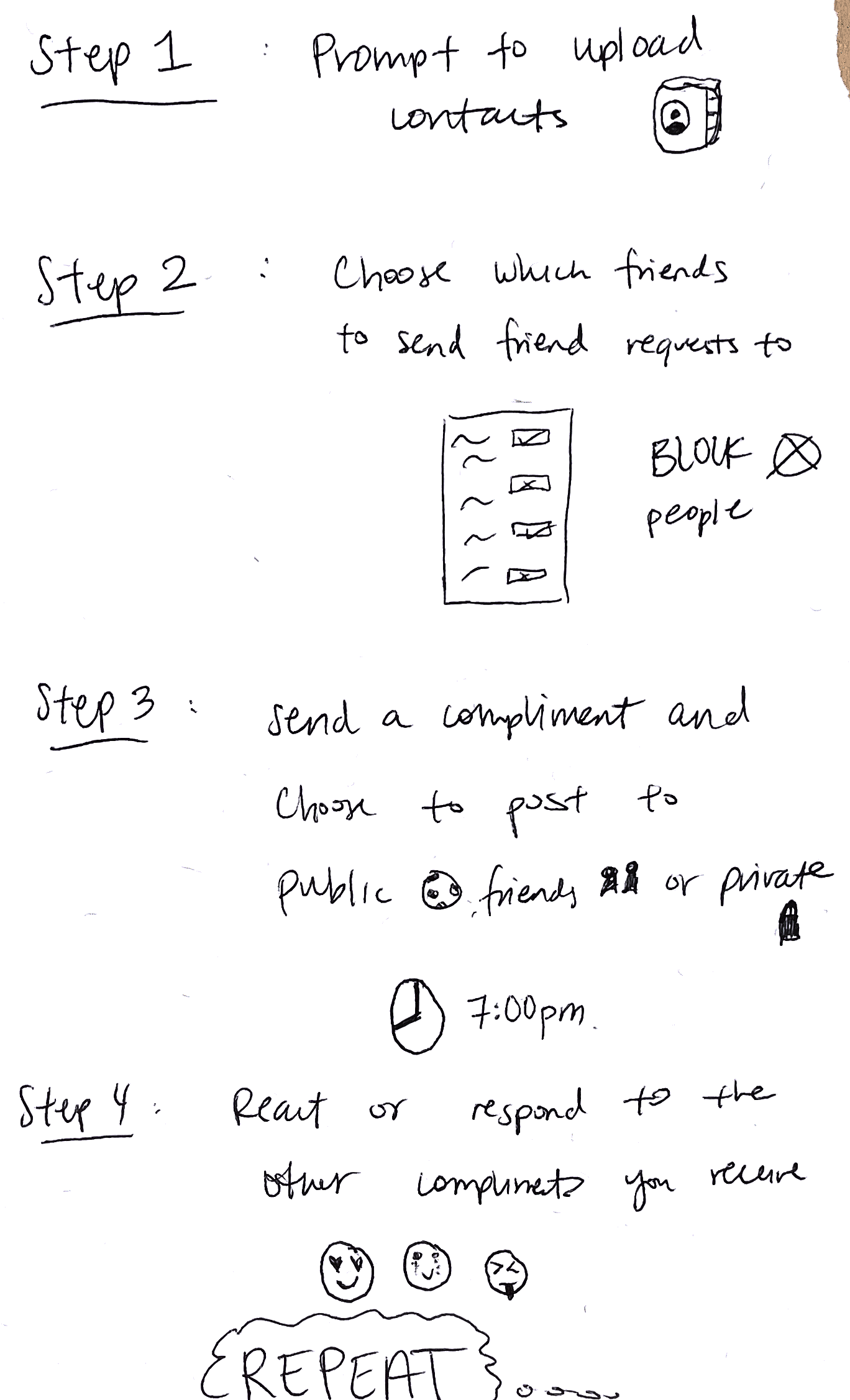
Figure 3: Idea 2
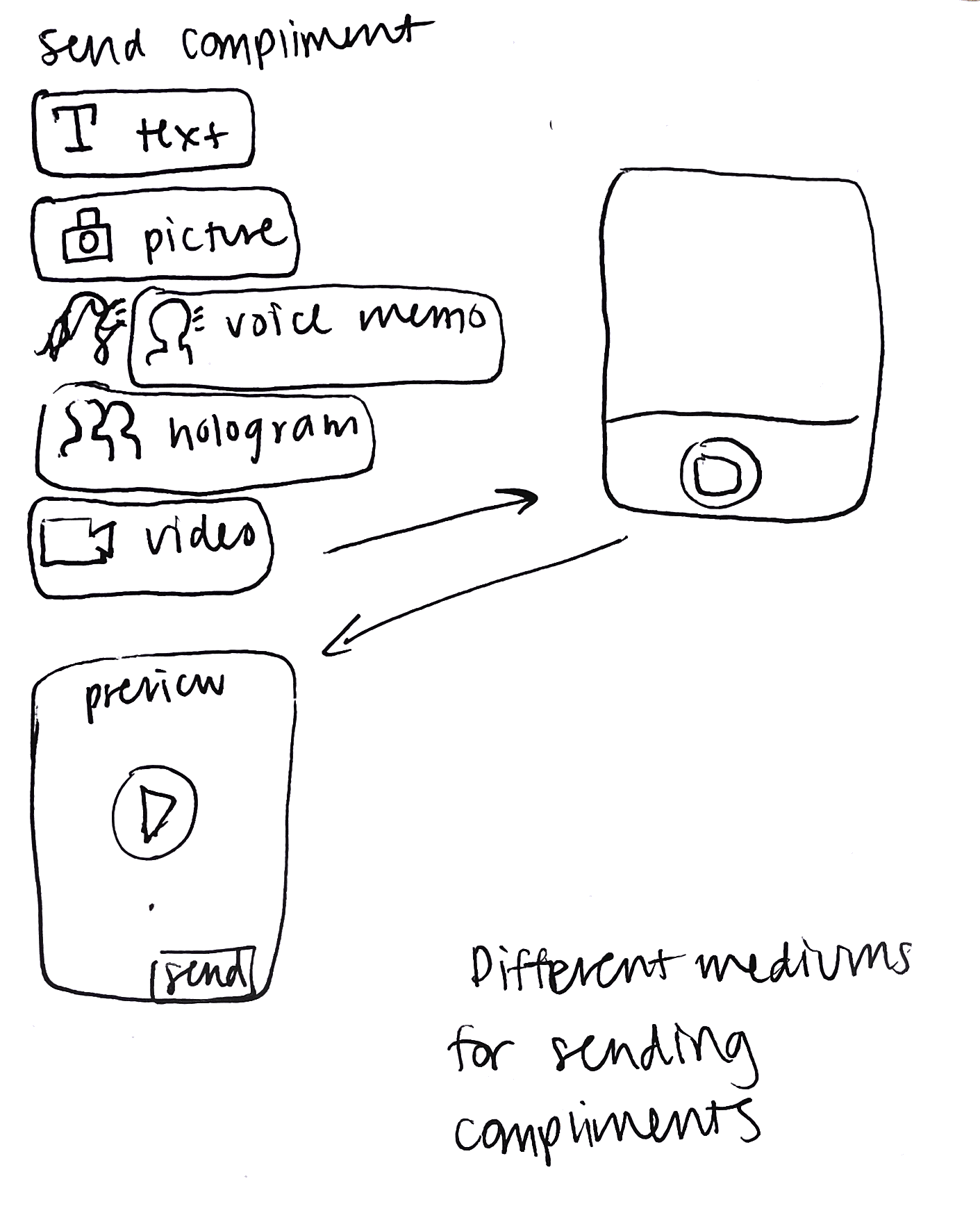
Figure 4: Idea 3
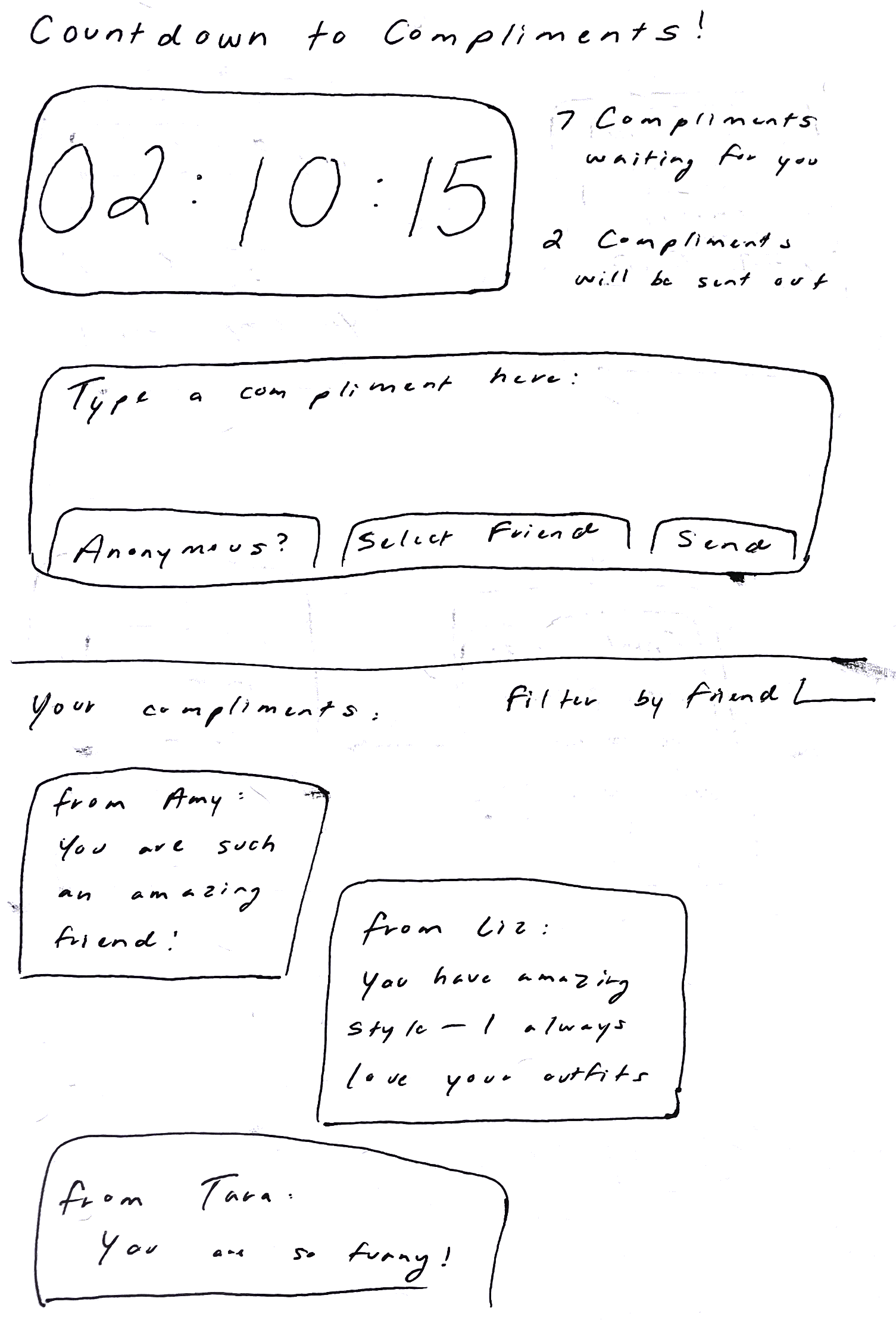
Figure 5: Idea 4
Finally, we further developed these ideas into storyboards and low-fidelity sketches to illustrate how a user might interact with these features.
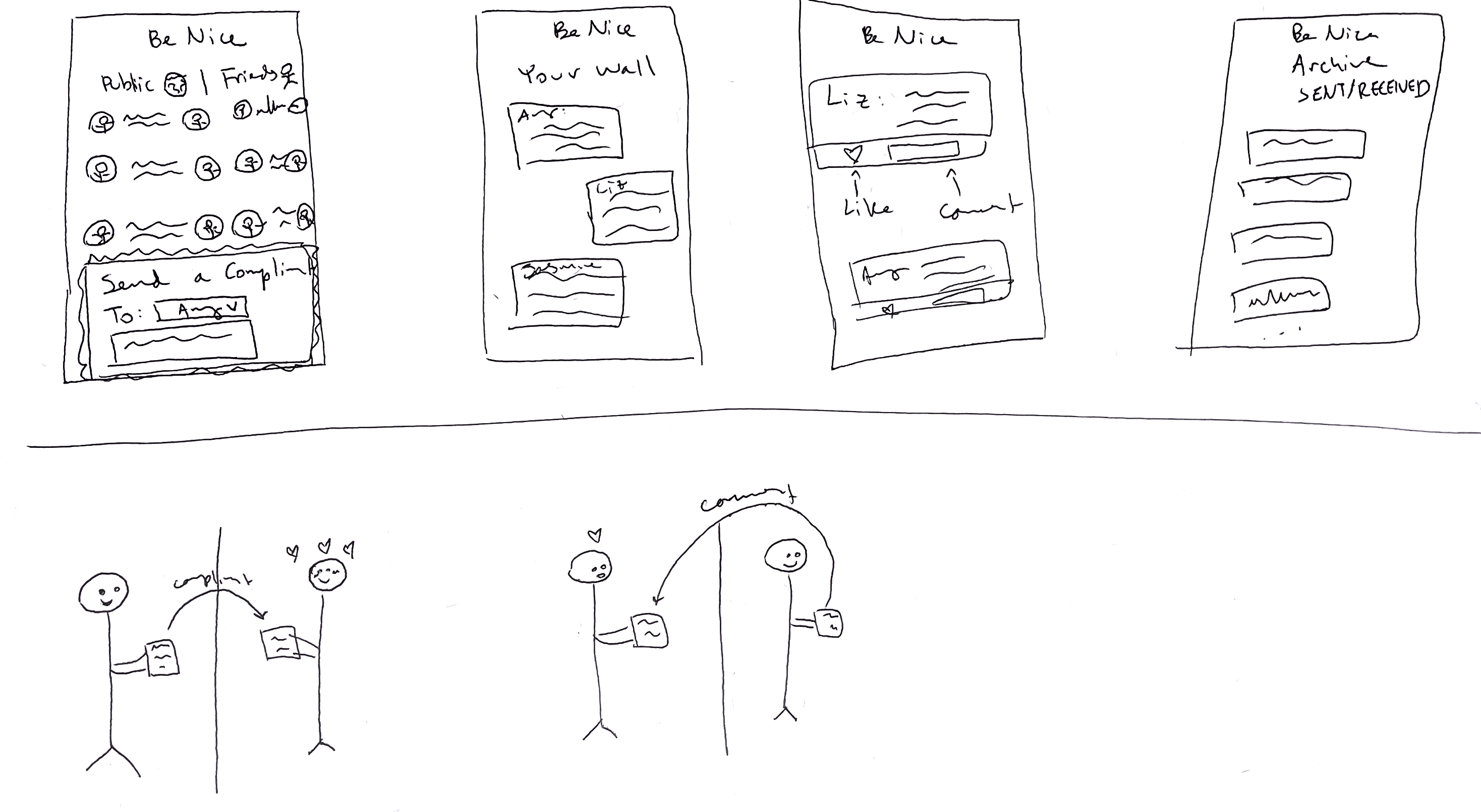
Figure 6: Sketch 1
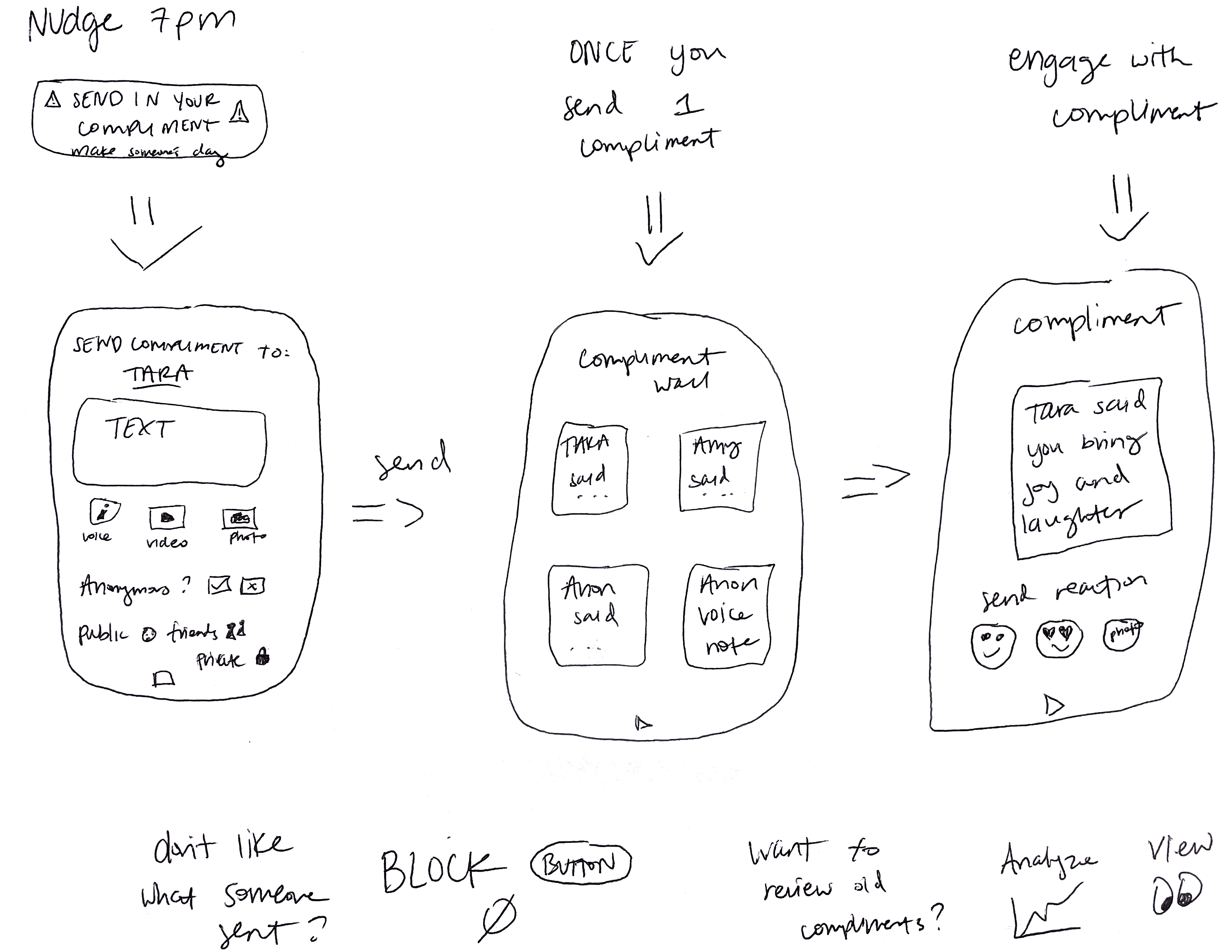
Figure 7: Sketch 2
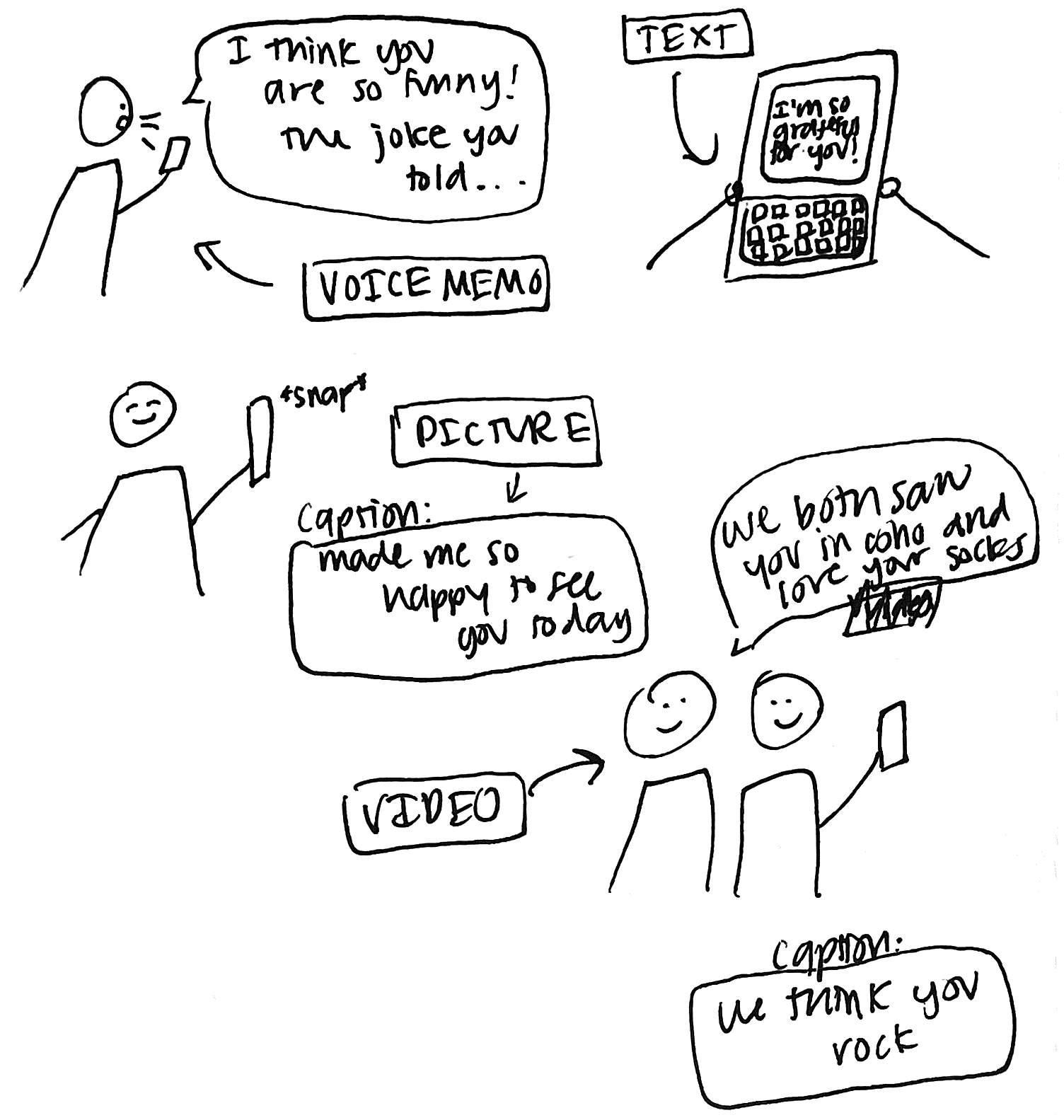
Figure 8: Sketch 3
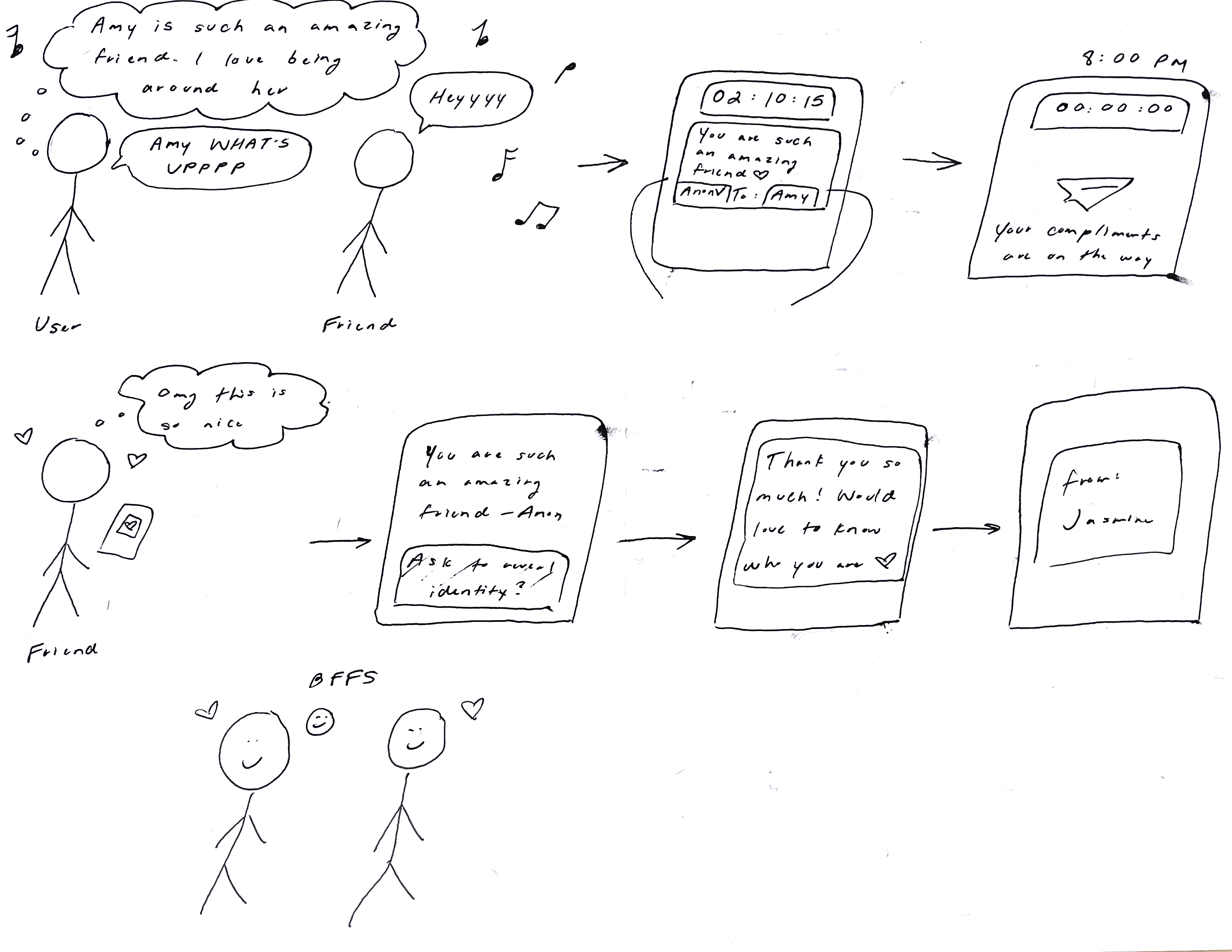
Figure 9: Sketch 4
A lot of our ideas are centered around the basic functionality of our app–the ability to send in compliments. Thus, the main component of our solution will be the ability to send in text-based compliments. We may also expand to allow videos or photos to be sent along with compliments. Basic choices will include the option for the compliment to be sent anonymously, and the option for the compliment to be added to the public compliment wall. As the “timer” worked well in our intervention study (we withheld compliments until a certain time, only sending out compliments to those that sent one in), we will incorporate that into our solution. If comments are sent anonymously, the receiver will have the option to react to the compliment with an emoji. We may expand reaction to include photos or text. The receiver of an anonymous compliment will have the option of asking the giver to reveal their identity. It is then up to the giver if they’d like to reveal themselves. So users are able to see their old compliments, we will have an archive that they can view with all of their old compliments. To address potential privacy and safety concerns, users will be able to block certain users from sending them compliments on the app. All of our chosen solutions are directly tied to insights from our intervention study. After testing our assumptions, we will likely make edits to this list of solutions.
Assumption Mapping
We were able to gain information on many of our assumptions during our baseline and intervention studies, as well as our literature review and competitive analysis. For example, we established that people have a desire to give out compliments in our baseline study. We found in our intervention study that people are more willing to give out deep and meaningful compliments virtually. We also established that users are motivated to give out compliments in order to reveal the compliment they received. These are all crucial assumptions for our solution design that we have successfully collected evidence for.
However, there are still some crucial assumptions that we lack evidence for. For example, we have only tested compliment-giving via written text, but not over voice memo or video. We have not tested letting people see compliments that others are receiving in a feed. We have not tested whether users enjoy looking through an archive of the past compliments they have given and received. We have not tested the functionality of allowing compliment recipients to react/respond to their compliments. We expect that these features will increase engagement but have not established this yet via testing.

Figure 10: Assumptions map
Assumptions Test
We identified two of our most important assumptions to be “WBT users will want to see other people’s compliments in a feed” and “WBT we can keep customers engaged by allowing them to react to compliments”. The first assumption is core to the design of our app and would involve extra considerations surrounding privacy and user consent. The second assumption is also core to the design of the compliment-giving mechanism and could have major ramifications on reciprocity effects between compliment givers/receivers.
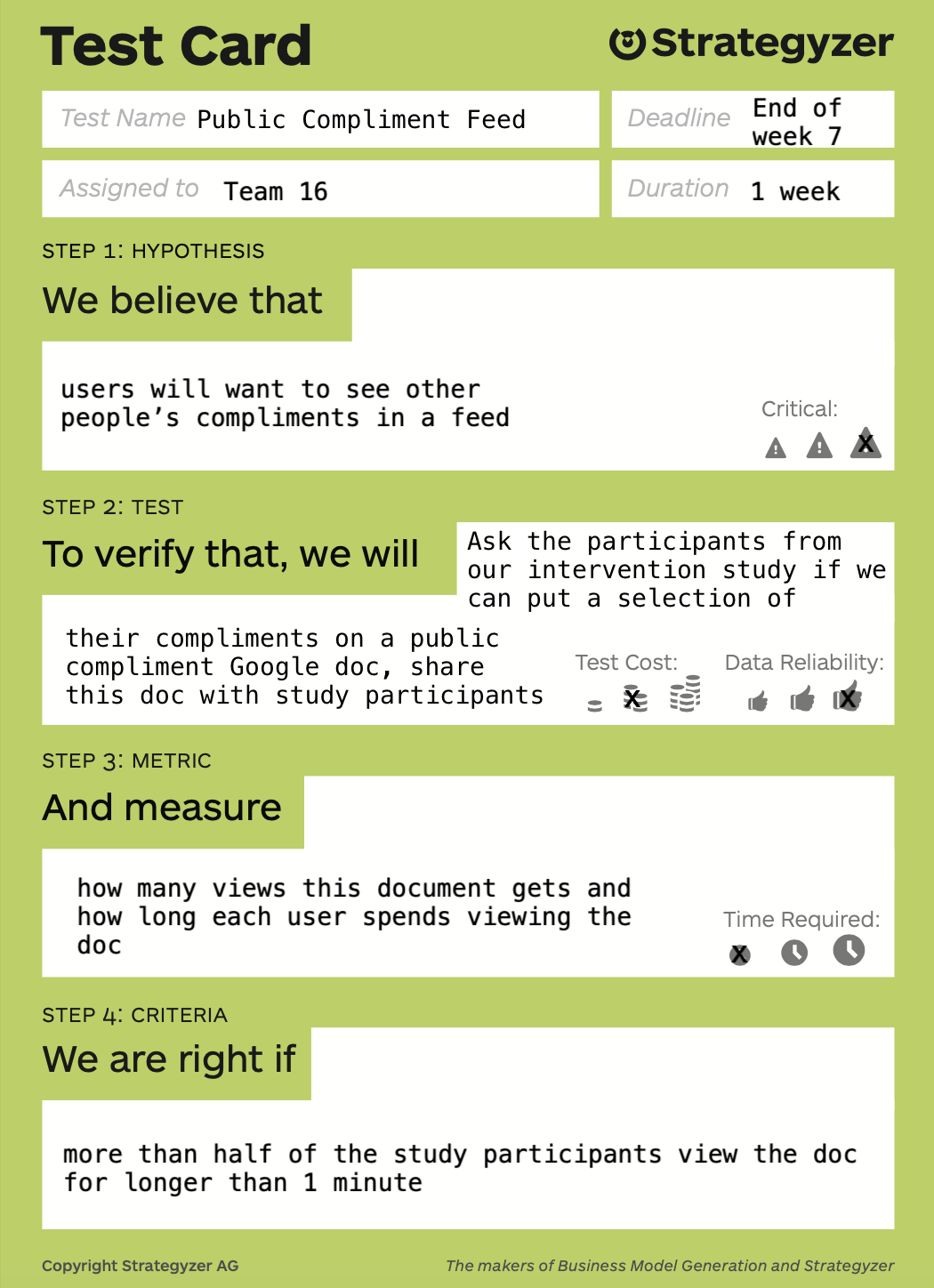
Figure 11: Assumptions test 1
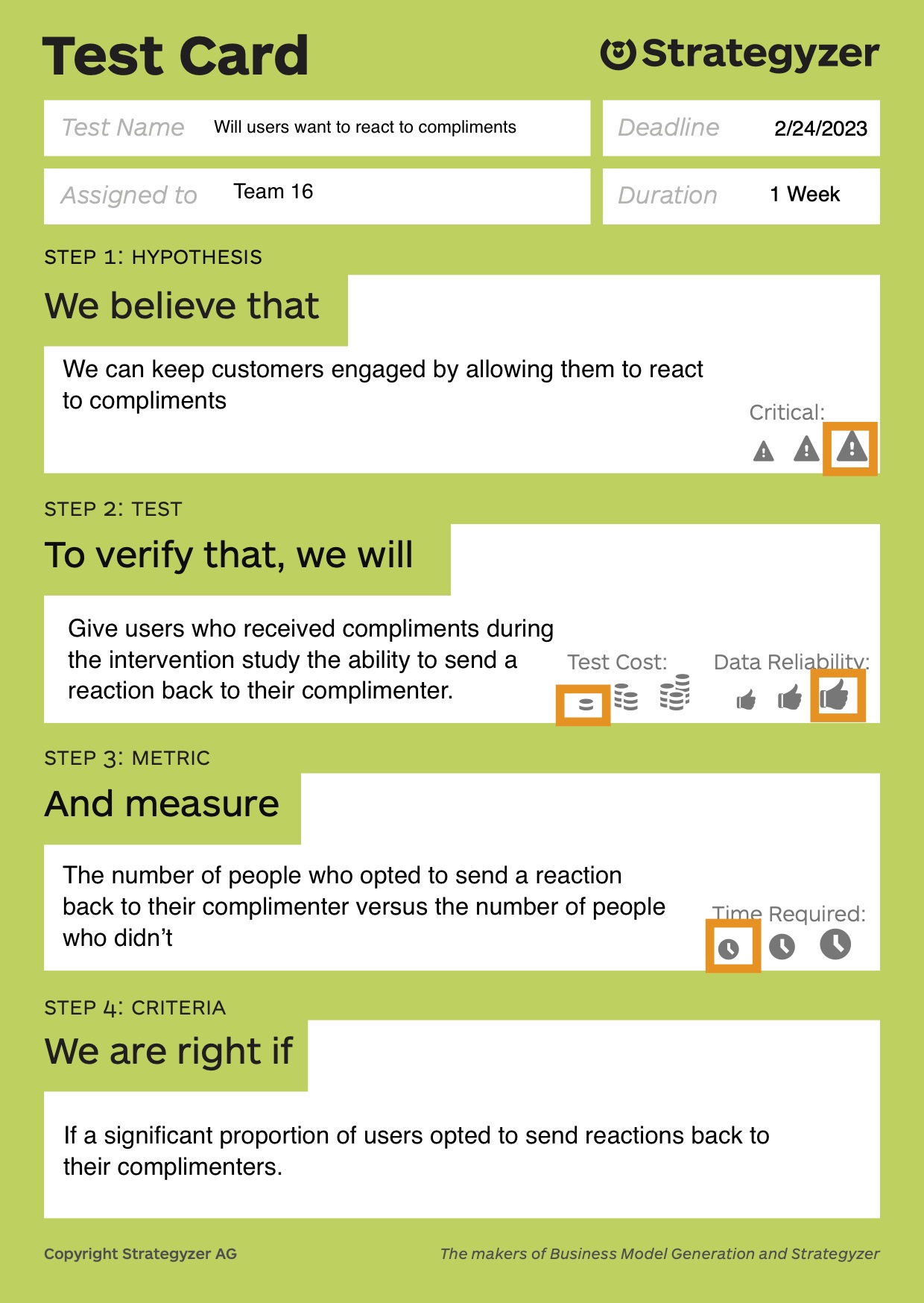
Figure 12: Assumptions test 2




Comments
Comments are closed.